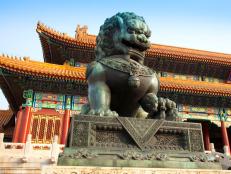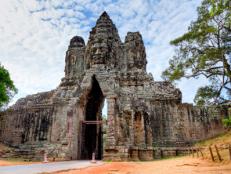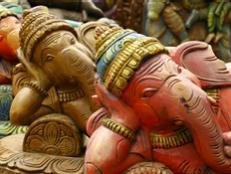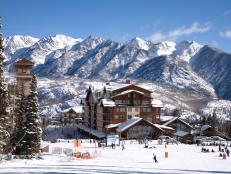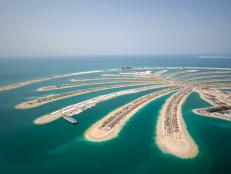Seven Wonders of China

For centuries, China has withstood the test of countless wars and political struggle to become the global powerhouse that it is today. With 1.3 billion people and 55 ethnic groups thriving within its borders, China is a stronghold of culture, myth and legend. From awe-inspiring works of art to tombs shrouded in mystery, we've uncovered China's Seven Wonders.
Terra Cotta Warriors
Xi'an, Shaanxi Province
In 1974, while digging a well in the city of Xi'an, Chinese farmers discovered an underground tomb filled with 8,000 statues of ancient Chinese warriors. Created around 221 B.C., these 8,000 terra cotta warriors are said to guard Emperor Qin's tomb. According to Chinese tradition, death is simply a continuity of life. People can take their possessions with them in death. However, Emperor Qin took this belief a bit further by building a tomb that stretches 35 square miles. In spite of this great discovery in 1974, archaeologists have yet to find the riches buried somewhere near Emperor Qin's tomb. For now, much of the mystery surrounding the tomb has yet to be solved.
Hanging Monastery
Mount Hengshan, Shanxi Province
Located at the foot of Mount Hengshan on the west cliff of Jinxia Gorge, the Hanging Monastery has been filling visitors with wonder for over 1,400 years. The ancient, sacred shrine stands fifteen stories above the ground and is supported only by its weathered, wooden beams. In spite of centuries of the harshest climate conditions, including a massive earthquake in 1303, the Hanging Monastery has remained unscathed. The reason for its resilience may be the structure itself. The Hanging Monastery was actually built into the sides of the cliff, giving its 40 cave rooms extra stability.
The Great Wall
Jiayuguan Pass, Gansu Province (West) to Shanhaiguan Pass, Hebei Province (East)
Perhaps China's most iconic man-made structure is its massive Great Wall. Stretching over 4,000 miles from Jiayuguan Pass in the West to Shanhaiguan Pass in the East, the Great Wall easily lives up to its name. Construction of the Great Wall began under Emperor Qin in 221 B.C. and continued up until the Qing Dynasty. The purpose of the wall was to protect the Chinese empire from any attacking armies. The Great Wall's structure changed over its 2,000 years to include higher walls, passes, signal towers and watchtowers. Today, the Great Wall is one of China's most popular tourist attractions.
Leshan Buddha
Leshan City, Sichuan Province
The Leshan Buddha is the largest Buddha in the world. Over 1,000 years ago, the Leshan Buddha was carved out of a cliff by devoted Buddhist monks; it took over 90 years to build. Just how big is the biggest Buddha in the world? The statue stands over 233 feet high and over 90 feet wide. According to local legend, the river waters located nearby used to be treacherous and took many lives over the years. After the Leshan Buddha was created, the turbulent waters calmed and life in Leshan City thrived. Today the Leshan Buddha is a popular attraction, but locals are now fighting to protect the ancient structure. Due to acid rain from nearby factory pollution, the Leshan Buddha's features may eventually fall off. Luckily, a team of devoted people are determined to protect the colossal structure from any further damage.
Mount Wudang
Wudang, Hubei Province
The slopes of Mount Wudang are adorned with magnificent temples, palaces and bridges -- each built in harmony with the surrounding landscape. The tranquil town of Wudang is home to the Golden hall, one of China's most sacred sites. Known as one of the most striking examples of religious architecture in the world, Mt. Wudang's 90-ton Golden Hall was plated entirely in gold in Beijing before being transported to the top of Mt. Wudang. Mount Wudang is also known for its martial arts. Both Tai Chi and Wudang Kung Fu were first practiced on the mountain. With all of its sacred history and traditions, there is no wonder why hundreds of visitors make the trek up the mountain each year.
Shi Bao Zhai Temple
Yangtze River (south bank)
Located on the south bank of the mighty Yangtze River, the Shi Bao Zhai Temple stands 12 stories high and is attached to a cliff without a single nail. Before the temple was built, followers had to risk their lives in order to pay homage to the statues of Buddha at the top of the mountain. How has the temple withstood the test of time? The secret is in the windows. The special windows allow the wind to be absorbed during inclement weather, protecting the temple from any possible damage. Today the beauty of the temple is threatened by the construction of the Three Gorges Dam, which will ultimately cause the Yangtze River to rise.
Forbidden City
Beijing, China
The Forbidden City in Beijing is the largest ancient palace in the world. For over 500 years, it has represented Chinese political power. Stretching over 7 million square feet and containing over 10,000 rooms, the Forbidden City was built to represent God's palace in heaven. Before the 20th century, the public was not allowed to enter the Forbidden City. The punishment for unauthorized entry to the Forbidden City was beheading. Today, the public can pass (unscathed) through the once off-limits palace.
